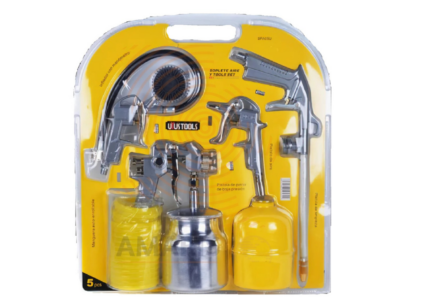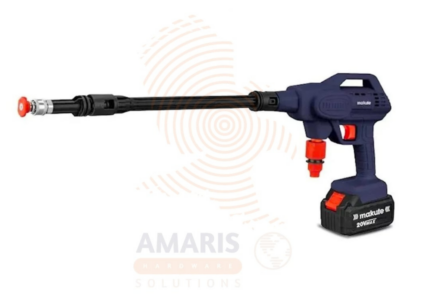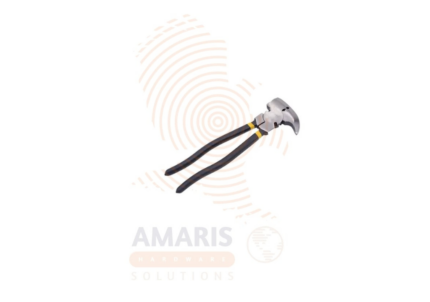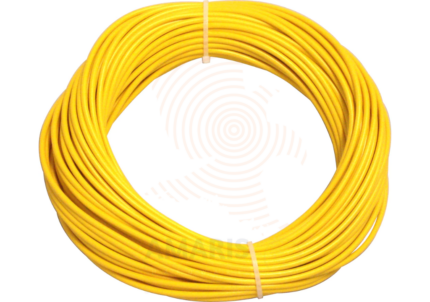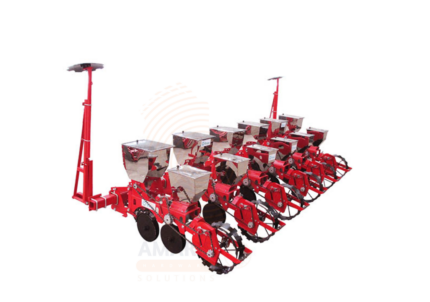Back to products
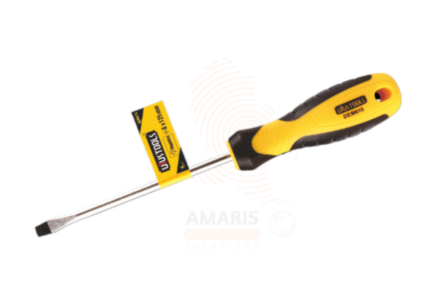

Flat Screwdriver - TPR handle
$12.85 Original price was: $12.85.$12.21Current price is: $12.21.
Fish Aerator
WhatsApp Order
A fish aerator is a device designed to increase oxygen levels in water, essential for maintaining the health and survival of fish in aquaculture systems, ponds, tanks, and live fish transport. It works by agitating water or releasing air bubbles to promote gas exchange between air and water. Fish aerators are commonly used in fish farming, aquariums, and bait tanks to prevent oxygen depletion, especially in densely stocked or warm water conditions. They improve water quality, reduce fish stress, and promote better growth and survival rates.
Description
Table of Contents
ToggleFish Aerator
Uses
-
Aquaculture Oxygenation
o Maintains adequate dissolved oxygen levels in fish ponds, hatcheries, and farming tanks.
o Supports healthy fish metabolism, feeding, and growth. -
Emergency Aeration
o Provides rapid oxygenation during fish die-offs, algal blooms, or hot weather when oxygen levels drop.
o Prevents mass fish mortality during power outages or system failures. -
Water Circulation
o Promotes water movement to prevent stagnation, especially in still or enclosed bodies of water.
o Reduces formation of toxic gases like ammonia and hydrogen sulfide. -
Live Fish Transport
o Used in oxygen supply systems for transporting live fish over long distances.
o Keeps fish active and reduces mortality during transit. -
Aquariums and Bait Tanks
o Aerates water in home aquariums and bait tanks to keep aquatic species alive and active.
o Supports life for sensitive species and improves filtration efficiency. -
Winter Pond Maintenance
o Prevents ice cover from completely sealing ponds, allowing gas exchange during cold months.
o Protects overwintering fish from oxygen depletion. -
Breeding and Hatchery Systems
o Ensures optimal water quality for egg incubation and juvenile fish development.
o Improves hatching rates and reduces deformities from poor oxygenation.
SAFETY HANDLING PRECAUTIONS
Safety Precautions
-
Electrical Safety
o Use a properly grounded power source and ensure all electrical components are waterproof or outdoor-rated.
o Avoid handling the aerator with wet hands or while standing in water. -
Check for Proper Installation
o Position the aerator securely in the water to avoid tipping, clogging, or motor damage.
o Keep cables and air tubing clear of moving parts and walkways. -
Regular Maintenance
o Clean air stones, impellers, or diffusers regularly to maintain optimal airflow and performance.
o Check for blockages or algae buildup that could affect efficiency. -
Avoid Over-Aeration
o Do not exceed recommended oxygen levels, which can stress fish or cause gas bubble disease.
o Monitor oxygen concentration using appropriate sensors or test kits. -
Use Weather-Proof Equipment
o Select aerators designed for outdoor or submersible use, especially in open pond applications.
o Protect power units and connections from rain or direct sunlight. -
Safe Handling and Storage
o Turn off and unplug the aerator before cleaning, servicing, or moving it.
o Store equipment in a dry, cool place when not in use. -
Monitor Fish Behavior
o Watch for signs of oxygen stress such as gasping at the surface—adjust aeration accordingly.
o Ensure the aerator doesn’t create strong currents that disturb fish, especially fry. -
Training and Instructions
o Only trained personnel should install and maintain aerators in commercial systems.
o Follow manufacturer guidelines for setup, operation, and safety.
Related products
Bush Cutter Blade
A bush cutter blade is a specialized cutting component designed for use in a bush cutter or brush cutter machine. It is a robust and sharp-edged tool crafted to efficiently cut through dense vegetation, such as bushes, shrubs, tall grass, and small trees. The design of the bush cutter blade is tailored to provide effective and precise cutting in challenging outdoor conditions. These blades come in various shapes and configurations, allowing users to adapt to different types of vegetation and land management tasks. Bush cutter blades play a crucial role in vegetation control, land clearing, and maintenance activities across various industries and applications.
Cordless Pressure Washer
A cordless pressure washer is a portable, battery-powered cleaning device that delivers pressurized water for high-efficiency cleaning without needing power outlets or fixed water sources. It features a rechargeable lithium-ion battery, compact pump, and interchangeable nozzles for adjustable spray patterns. Designed for mobility and ease of use, it can draw water from buckets or portable tanks, making it ideal for remote tasks, outdoor cleaning, and situations where conventional connections are unavailable.
Fence Pliers
Fence pliers are a specialized type of pliers designed for use in fencing and related tasks. They typically feature a combination of functions that make them well-suited for various activities involved in installing, repairing, and maintaining fences. These pliers often include features such as a gripping jaw, wire-cutting blades, a staple puller, and sometimes a hammerhead. The design of fence pliers aims to provide versatility and convenience for professionals or DIY enthusiasts working with fencing materials, wires, and staples.
Lawn Saw Blade – Alloy
A lawn saw blade alloy refers to the material composition of the blade used in a lawn saw. The term "alloy" indicates that the blade is made from a mixture of different metals, combining their properties to enhance the overall performance and durability of the saw blade. The specific alloy composition can vary, but commonly used materials include steel alloys that provide strength, sharpness, and resistance to wear and corrosion. The choice of alloy in a lawn saw blade is crucial for ensuring efficient cutting, longevity, and resistance to the environmental conditions encountered during lawn and garden use.
Lopping Saw
A lopping saw is a specialized cutting tool designed for pruning and trimming tree branches, typically featuring a long, curved blade with large, sharp teeth. This tool is specifically crafted to make it easier to reach and cut through high or thick branches that may be challenging to access with standard pruning shears or a traditional saw. Lopping saws are commonly used in gardening, arboriculture, and forestry to facilitate efficient and controlled pruning of trees and shrubs.
Nylon Round Trimmer Line
The Nylon Round Trimmer Line is a flexible, durable cutting line used in grass trimmers and brush cutters for lawn maintenance and landscaping. Made from high-strength nylon material, it features a round cross-section that provides excellent wear resistance, smooth cutting performance, and minimal breakage. This type of line is ideal for light to moderate trimming tasks such as edging lawns, clearing grass around trees, fences, and garden beds. It fits most standard string trimmers and is easy to wind into spool heads. Its consistent diameter ensures even wear and effective vegetation cutting across a variety of conditions.
Nylon Square Trimmer Line
A nylon square trimmer line is a type of cutting line used in trimmers and weed eaters for lawn and garden maintenance. It is typically made of nylon material and has a square cross-sectional shape, as opposed to a round or other geometric shape. The square design enhances cutting efficiency and durability, allowing the trimmer line to effectively cut through grass, weeds, and other vegetation. The choice of nylon as the material ensures flexibility, strength, and resistance to wear, making it suitable for various cutting tasks in landscaping and lawn care.
Planter
A Planter is a container or device used to hold soil and plants for gardening, landscaping, or indoor decoration. Planters come in various sizes, shapes, and materials, such as plastic, ceramic, metal, or wood, designed to provide an ideal growing environment for flowers, herbs, vegetables, or ornamental plants. They are essential for organizing plants in limited spaces, improving aesthetics, and facilitating plant care by providing drainage and soil containment.


 Acrylic Sealants
Acrylic Sealants Construction Adhesives
Construction Adhesives Double-Sided Tape
Double-Sided Tape Duct Tape
Duct Tape Electrical Tape
Electrical Tape Epoxy & Resins
Epoxy & Resins Masking Tape
Masking Tape
 Automotive Wrenches & Socket Sets
Automotive Wrenches & Socket Sets Battery Chargers & Jump Starters
Battery Chargers & Jump Starters Car Jacks & Stands
Car Jacks & Stands Car Wash & Detailing Products
Car Wash & Detailing Products Diagnostic Tools
Diagnostic Tools Tire Inflators
Tire Inflators Vehicle Lighting
Vehicle Lighting Oil & Lubricants
Oil & Lubricants
 Adhesives & Sealants
Adhesives & Sealants Bricks & Blocks
Bricks & Blocks Cement & Concrete
Cement & Concrete Drywall & Plaster
Drywall & Plaster Flooring (Tiles, Wood, Laminate)
Flooring (Tiles, Wood, Laminate) Lumber & Plywood
Lumber & Plywood Paints, Primers & Coatings
Paints, Primers & Coatings Insulation Materials
Insulation Materials Roofing Materials
Roofing Materials
 Circuit Breakers
Circuit Breakers Electrical Cables & Wires
Electrical Cables & Wires Switches & Sockets
Switches & Sockets Fuses & Relays
Fuses & Relays Connectors & Terminals
Connectors & Terminals Electrical Boxes & Panels
Electrical Boxes & Panels Conduit & Fittings
Conduit & Fittings Lighting Fixtures & Bulbs
Lighting Fixtures & Bulbs Extension Cords & Power Strips
Extension Cords & Power Strips
 Anchors
Anchors Bolts
Bolts Clips & Clamps
Clips & Clamps Screws
Screws Nuts
Nuts Washers
Washers Rivets
Rivets Nails
Nails Threaded Rods
Threaded Rods
 Hammers
Hammers Measuring Tools (Tapes, Levels, Calipers)
Measuring Tools (Tapes, Levels, Calipers) Screwdrivers
Screwdrivers Pliers & Cutters
Pliers & Cutters Saws & Blades
Saws & Blades Chisels & Punches
Chisels & Punches Allen Keys & Hex Keys
Allen Keys & Hex Keys Ratchets & Socket Sets
Ratchets & Socket Sets Wrenches & Spanners
Wrenches & Spanners
 Power Tool Accessories (Blades, Bits, Discs)
Power Tool Accessories (Blades, Bits, Discs) Rotary Tools
Rotary Tools Saws (Circular, Jigsaw, Reciprocating)
Saws (Circular, Jigsaw, Reciprocating) Drills & Drivers
Drills & Drivers Grinders & Sanders
Grinders & Sanders Heat Guns
Heat Guns Nail Guns
Nail Guns Impact Wrenches
Impact Wrenches Batteries & Chargers
Batteries & Chargers
 Pipes & Fittings (PVC, Copper, PEX)
Pipes & Fittings (PVC, Copper, PEX) Plumbing Tools
Plumbing Tools Pumps & Motors
Pumps & Motors Sealants & Adhesives for Plumbing
Sealants & Adhesives for Plumbing Valves & Taps
Valves & Taps Water Heaters
Water Heaters Drainage Systems
Drainage Systems Faucets & Fixtures
Faucets & Fixtures Hoses & Tubing
Hoses & Tubing
 Hinges & Latches
Hinges & Latches Hooks & Brackets
Hooks & Brackets Window Hardware
Window Hardware Chains & Cables
Chains & Cables Casters & Wheels
Casters & Wheels Shelving & Storage Systems
Shelving & Storage Systems Door Handles & Locks
Door Handles & Locks Drawer Slides & Cabinet Hardware
Drawer Slides & Cabinet Hardware
 Personal Protective Equipment (PPE)
Personal Protective Equipment (PPE) Respirators & Masks
Respirators & Masks Safety Glasses
Safety Glasses Safes
Safes Security Cameras
Security Cameras Gloves
Gloves Helmets
Helmets Ear Protection
Ear Protection Fire Safety Equipment
Fire Safety Equipment Locks & Padlocks
Locks & Padlocks Motion Sensors & Alarms
Motion Sensors & Alarms
 Garden Fencing
Garden Fencing Garden Furniture Hardware
Garden Furniture Hardware Lawn Mowers
Lawn Mowers Trimmers & Edgers
Trimmers & Edgers Shovels & Spades
Shovels & Spades Rakes & Hoes
Rakes & Hoes Pruning Shears & Loppers
Pruning Shears & Loppers Watering Systems (Hoses, Sprinklers, Nozzles)
Watering Systems (Hoses, Sprinklers, Nozzles)
 Interior Paints
Interior Paints Paint Brushes & Rollers
Paint Brushes & Rollers Paint Strippers & Thinners
Paint Strippers & Thinners Paint Trays & Accessories
Paint Trays & Accessories Exterior Paints
Exterior Paints Spray Paints
Spray Paints Primers & Undercoats
Primers & Undercoats Varnishes & Stains
Varnishes & Stains
 Gaskets & Seals
Gaskets & Seals Hydraulic Fittings
Hydraulic Fittings Industrial Fasteners
Industrial Fasteners Industrial Hoses
Industrial Hoses Lubricants & Greases
Lubricants & Greases Metal Sheets & Bars
Metal Sheets & Bars Bearings & Bushings
Bearings & Bushings Belts & Pulleys
Belts & Pulleys
 HVAC Filters
HVAC Filters Insulation for HVAC
Insulation for HVAC Air Conditioners
Air Conditioners Refrigerants
Refrigerants Ventilation Ducts & Fittings
Ventilation Ducts & Fittings Thermostats & Controllers
Thermostats & Controllers Fans & Blowers
Fans & Blowers
 Pegboards & Hooks
Pegboards & Hooks Shelving Units
Shelving Units Storage Bins & Containers
Storage Bins & Containers Toolboxes & Tool Chests
Toolboxes & Tool Chests Workbenches
Workbenches Drawer Organizers
Drawer Organizers Labeling Supplies
Labeling Supplies
 Welding Accessories (Clamps, Brushes)
Welding Accessories (Clamps, Brushes) Welding Electrodes & Rods
Welding Electrodes & Rods Welding Helmets & Gloves
Welding Helmets & Gloves Welding Machines
Welding Machines Soldering Irons & Stations
Soldering Irons & Stations Flux & Solder Wire
Flux & Solder Wire
 Generator Accessories
Generator Accessories Inverters
Inverters Portable Generators
Portable Generators Power Inverters
Power Inverters Transfer Switches
Transfer Switches Diesel & Gasoline Generators
Diesel & Gasoline Generators
 Transport Equipment: Carts, Dollies, and Hand Trucks
Transport Equipment: Carts, Dollies, and Hand Trucks Storage Solutions: Pallets, Racks, and Containers
Storage Solutions: Pallets, Racks, and Containers Lifting Equipment: Hoists, Cranes, and Jacks
Lifting Equipment: Hoists, Cranes, and Jacks Conveyors and Accessories: Belts and Rollers
Conveyors and Accessories: Belts and Rollers
